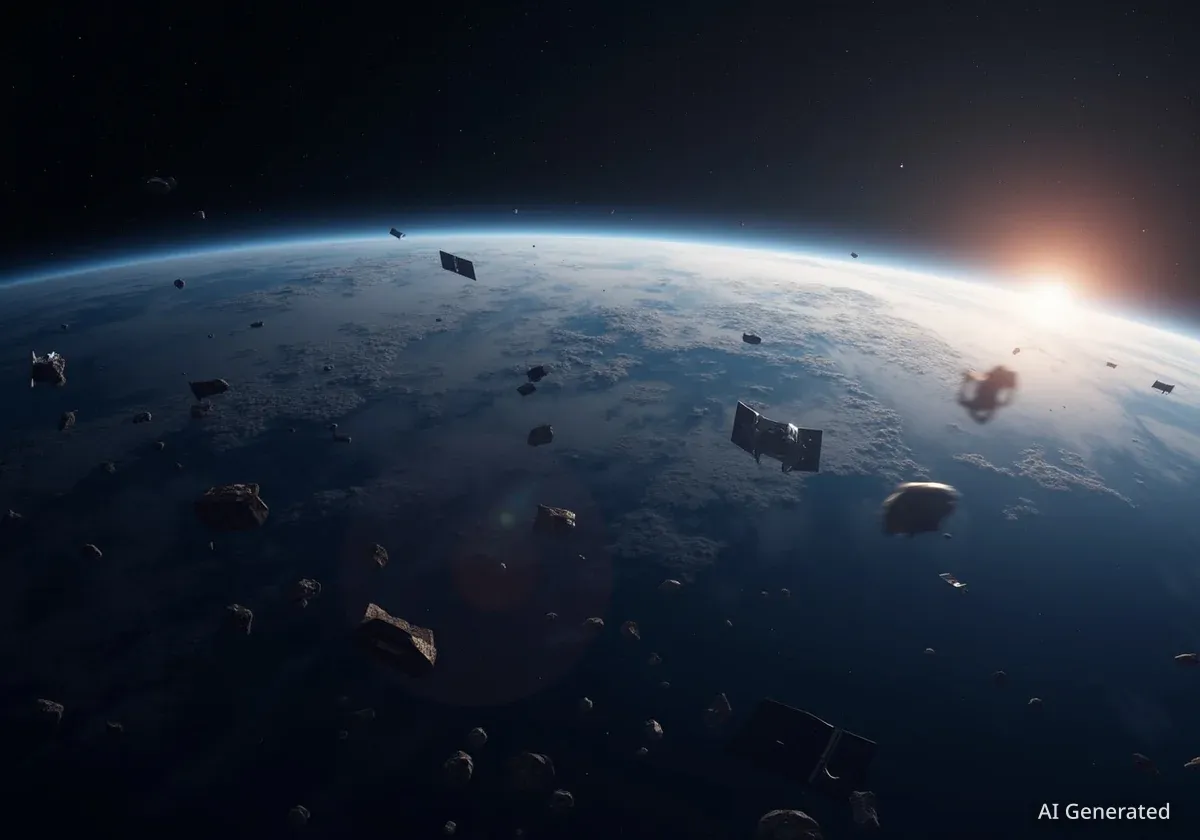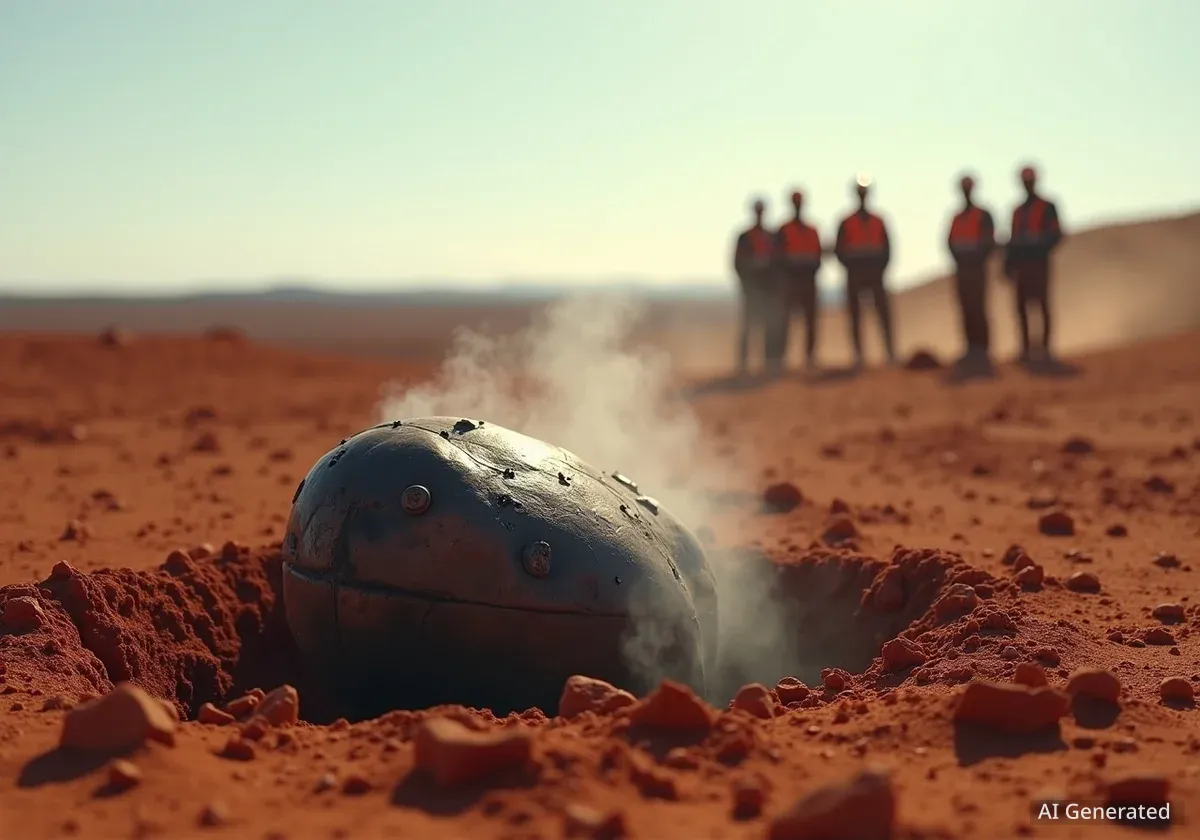A new report has identified the 50 most hazardous pieces of space debris in low-Earth orbit, revealing that removing them could cut the potential for future debris-generating collisions by half. The list is dominated by large, decades-old rocket bodies, with a significant number belonging to Russia and the former Soviet Union.
Key Takeaways
- A new study identifies the top 50 debris objects that pose the greatest collision risk in low-Earth orbit.
- Removing all 50 objects would reduce the overall debris-generating potential by 50%. Removing just the top 10 would lower the risk by 30%.
- The majority of these high-risk objects are spent rocket bodies (88%) and were launched before the year 2000 (76%).
- A recent trend shows China abandoning numerous rocket stages in long-duration orbits, adding to the long-term problem.
Identifying the Greatest Orbital Threats
Researchers have pinpointed the specific pieces of orbital debris that present the most significant threat to the stability of low-Earth orbit (LEO). This critical region, extending up to 2,000 kilometers above the planet, is essential for satellites providing communications, navigation, and Earth observation services.
The analysis, led by Darren McKnight, a senior technical fellow at LeoLabs, was presented at the International Astronautical Congress. The study evaluated objects based on their mass, altitude, and proximity to other space traffic. Larger objects at higher altitudes are considered more dangerous because they can create more debris that will persist in orbit for centuries.
These objects are traveling at speeds approaching 8 kilometers per second (nearly 5 miles per second). A collision at this velocity would shatter the objects involved, creating thousands of smaller fragments. This could initiate a chain reaction of further collisions, a scenario known as the Kessler Syndrome, which could render parts of LEO unusable.
What is the Kessler Syndrome?
Proposed by NASA scientist Donald J. Kessler in 1978, the Kessler Syndrome is a theoretical scenario where the density of objects in low-Earth orbit becomes high enough that collisions between objects cause a cascade. Each collision generates more space debris, which in turn increases the likelihood of further collisions, potentially creating an impassable debris belt around Earth.
A List Dominated by Legacy Hardware
The report highlights that the current danger is largely a legacy issue. "The things left before 2000 are still the majority of the problem," stated McKnight. According to the paper, 76% of the top 50 most hazardous objects were placed in orbit during the last century.
Spent rocket bodies are the primary culprits, accounting for 88% of the objects on the list. These are the upper stages of rockets that are abandoned after delivering their satellite payloads to orbit.
National Contributions to High-Risk Debris
The list shows a clear breakdown of which nations are responsible for the most dangerous pieces of legacy debris:
- Russia and the Soviet Union: 34 objects
- China: 10 objects
- United States: 3 objects
- Europe: 2 objects
- Japan: 1 object
Russian SL-16 and SL-8 rocket variants are particularly prominent, occupying 30 of the top 50 positions. The second most hazardous object on the entire list is Europe's defunct Envisat satellite, which launched in 2002 and failed in 2012.
The Top 10 Most Hazardous Objects
- A Russian SL-16 rocket (launched 2004)
- Europe's Envisat satellite (launched 2002)
- A Japanese H-II rocket (launched 1996)
- A Chinese CZ-2C rocket (launched 2013)
- A Soviet SL-8 rocket (launched 1985)
- A Soviet SL-16 rocket (launched 1988)
- Russia's Kosmos 2237 satellite (launched 1993)
- Russia's Kosmos 2334 satellite (launched 1996)
- A Soviet SL-16 rocket (launched 1988)
- A Chinese CZ-2D rocket (launched 2019)
A New and Concerning Trend
While legacy debris remains the biggest problem, researchers are concerned about a new trend of irresponsible practices. "The bad news is, since January 1, 2024, we've had 26 rocket bodies abandoned in low-Earth orbit that will stay in orbit for more than 25 years," McKnight explained.
The 25-year guideline is a widely accepted international standard. It suggests that operators should ensure their satellites and rocket stages are removed from orbit within 25 years of mission completion. This is typically achieved by placing them in an orbit low enough for atmospheric drag to pull them down or by performing a controlled deorbit burn.
Of the 26 new, long-lasting rocket bodies added in the last 21 months, 21 were launched by China. These launches are primarily associated with the rapid deployment of two new satellite megaconstellations, Guowang and Thousand Sails.
"In their rush to move quickly, they are adding to the long-term collision hazard."
While China has demonstrated the capability to perform sustainable deorbits with some of its rockets, like the Long March 5 using a YZ-2 upper stage, it frequently chooses not to with other launch vehicles. This is often a performance trade-off, as reserving fuel for a deorbit burn reduces the rocket's total payload capacity.
The Path to a Cleaner Orbit
The study provides a clear, quantifiable justification for investing in active debris removal (ADR) missions. The concept involves sending a specialized spacecraft to capture and deorbit a piece of junk. While technologically feasible, the high cost has been a major barrier.
McKnight's analysis offers a compelling argument for action. "If you take out 10 of the objects, you reduce it by 30 percent," he said. "That's a measurable change. I think that's what's been missing in the past about justifying active debris removal."
Several organizations are developing ADR technologies. The European Space Agency (ESA) and the Japanese space agency (JAXA) have funded initiatives in this area. One private company, Astroscale, is focused on developing satellite servicing and debris removal services. In 2023, its ADRAS-J spacecraft successfully approached and inspected a defunct Japanese rocket stage, a critical first step for a future removal attempt.
The report underscores a dual challenge: addressing the dangerous legacy objects from past decades while also preventing the accumulation of new, long-term debris from current launch activities. Without a global commitment to sustainable practices and investment in cleanup technologies, the risk of a catastrophic collision cascade will continue to grow.





